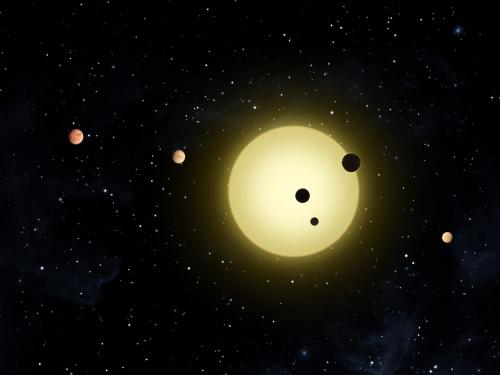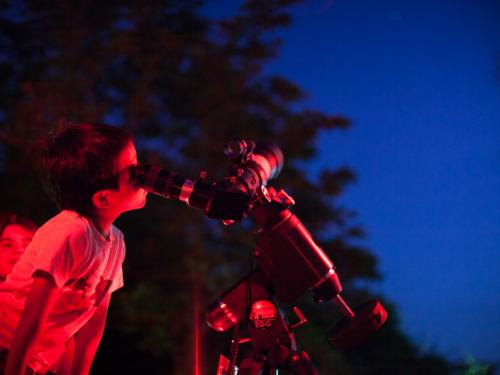

Stories of daring, stories of technological feats, stories of prevailing against the odds ... these are the stories we tell at the National Air and Space Museum. Dive in to the stories below to discover, learn, and be inspired.
Showing 31 - 40 of 44

November 24, 2017
Thanks to the Kepler Space Telescope, we now know the answer to a longstanding question in astronomy: how common are planetary systems around stars? Quite common, it turns out. In the relatively small patch of sky that Kepler studied, most of the stars had planets orbiting them. Scientists now believe that there are more planets than stars in our Milky Way galaxy.

May 04, 2017
In late March, I traveled to Puerto Rico to conduct observations of Venus using the Arecibo Observatory telescope. It was the second time I traveled to the observatory to make radar measurements of the surface of Venus. Even though it was my second time there, the size and capability of the telescope still impressed me; the telescope is largest single-aperture telescope ever constructed.

January 12, 2017
At the Observatory, we often get the question “What telescope should I buy?” But once you have one, what do you do with it? Maybe it’s still in the box, perhaps you found it frustrating to use, or maybe you’re ready to hunt for more advanced targets. If that sounds like you, it’s time to go to a telescope clinic!

March 07, 2016
This past summer I had the opportunity to operate the world’s largest single-dish telescope at the Arecibo Observatory in Puerto Rico.

December 20, 2015
One of the most common questions we get at the Phoebe Waterman Haas Public Observatory is about what kind of telescope to buy, whether for a gift or for personal use. We’re here to help answer that question.

December 10, 2015
This past year, I had the opportunity to lead a largely volunteer team, with supervision from museum specialist Anne McCombs and curator David DeVorkin, on a major restoration project of the Museum’s Apollo Telescope Mount (ATM). The ATM we worked on was a backup to the one used in 1973 on the Skylab space station to study high-energy solar activity.

April 23, 2014
Soon after the Hubble Space Telescope was launched in 1990, images and data from its instruments revealed that its main mirror was optically flawed. It suffered from spherical aberration—not all portions of the mirror focused to the same point. The mirror’s shape was off by less than 1/50th the thickness of a human hair, but this tiny flaw proved devastating to the quality of the Hubble’s images and to the efficiency of all of its instruments.

January 15, 2013
One of the jokes I inherited from my student years is the final exam question "Describe the Universe" which was followed by "and give two examples."

May 11, 2012
If you visit the Public Observatory during its daytime hours in May (1–3pm on Wednesday through Saturday, weather permitting), you can use the 16” telescope to observe an object which looks a lot like the Moon. Hanging in a blue sky, it shines with yellowish reflected sunlight.

January 18, 2012
If you've been to any of the nighttime observing sessions at our Public Observatory, you might have wondered why we mostly view the planets and the Moon. After all, the Observatory houses a professional 16-inch telescope, and several other high-quality portable telescopes; shouldn't they be able to show us great views of galaxies or nebulas? They should, and they could, if they were located at what astronomers call a "dark site" — away from the city lights that often outshine the lovely stars of nighttime.